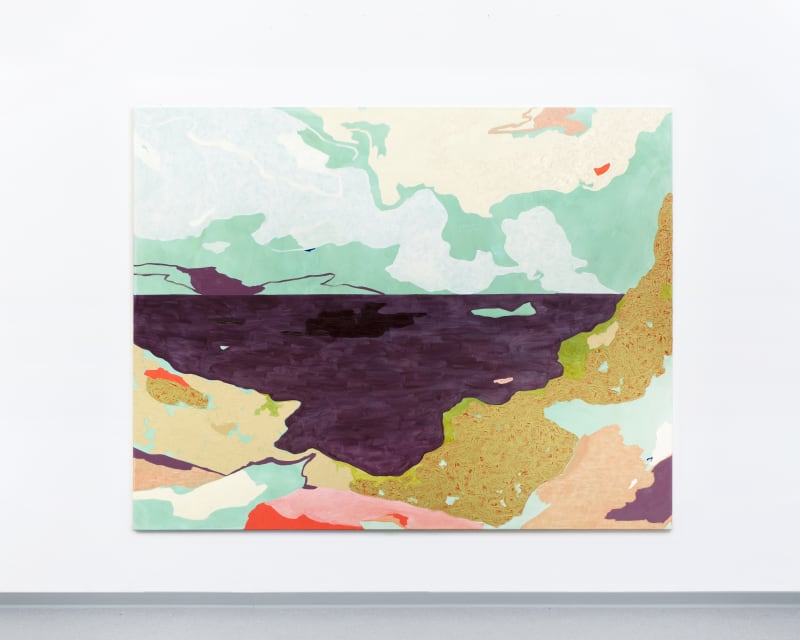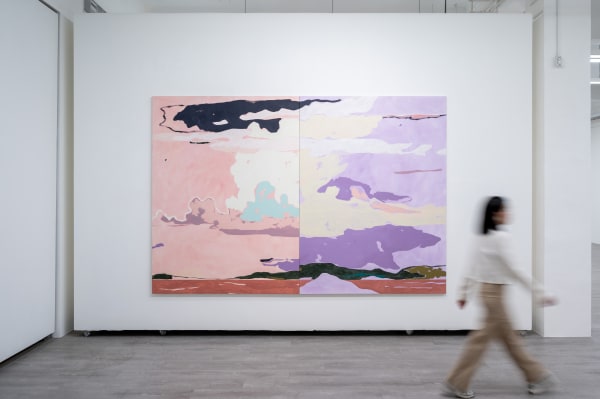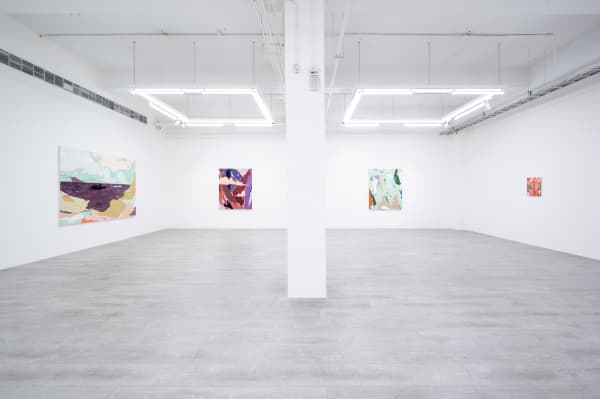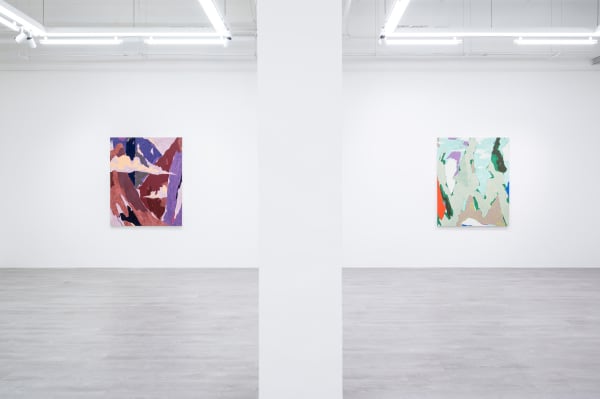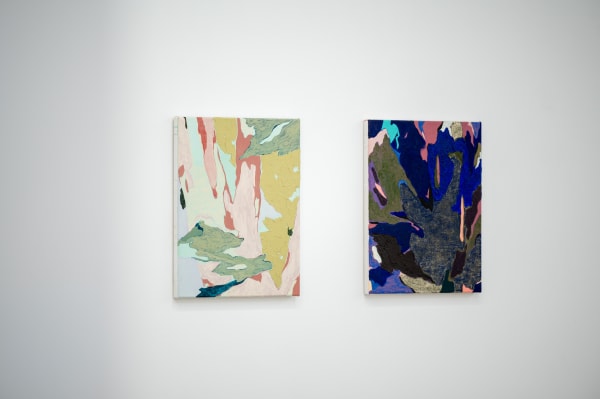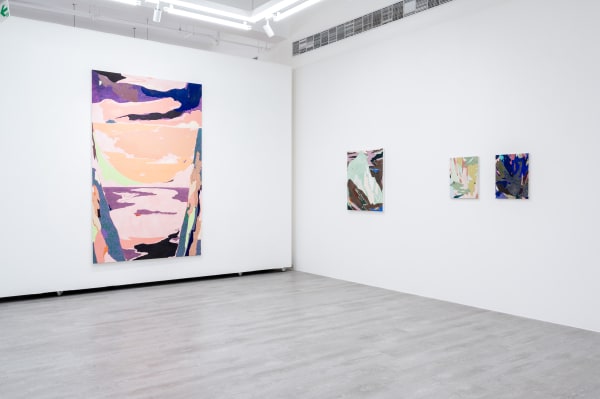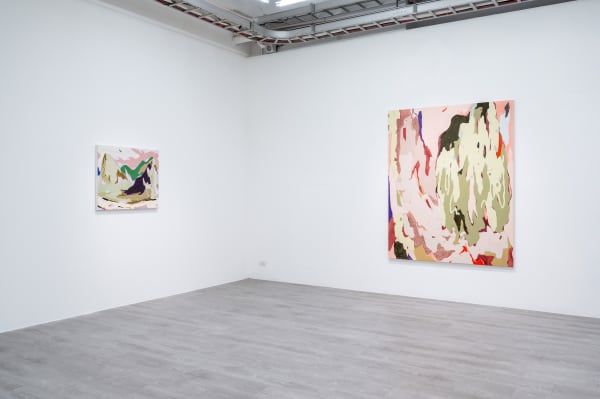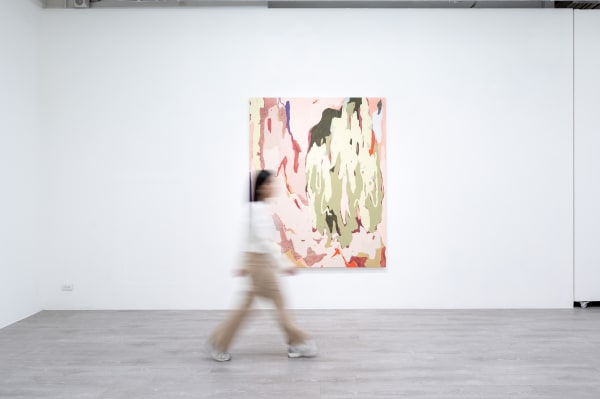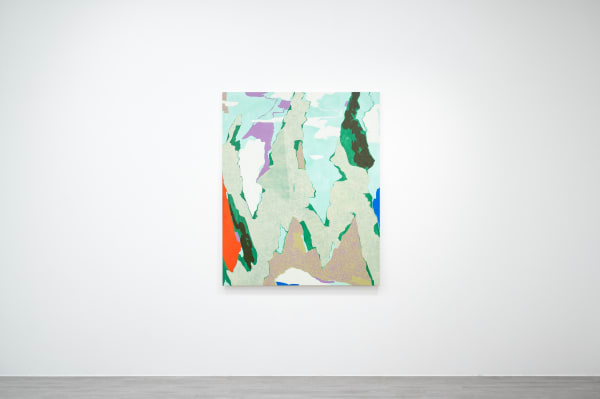What Do the Edges in Raffael Bader’s Paintings Signify?
Text by Sid Chen
In his first solo exhibition in Taiwan, Traverse Heights Right to the Edges, Leipzig-based artist Raffael Bader (b. 1987) presents over a dozen recent paintings that introduce a distinctive visual language, rarely seen in the local scene, through his use of color, spatial depth, brushwork, and layering. Some compositions retain traces of traditional structures, while others blur the boundaries between hues and textures, forming camouflage-like surfaces. These formal choices reflect Bader’s unique approach to color. Rather than relying on contrast or harmony in the conventional sense, he treats color as a medium for emotional and perceptual exploration. Through spatial disjunctions and layered planes, Bader reconstructs the relationship between humanity and the natural world. This exhibition not only showcases his painterly vocabulary but also reveals his ongoing inquiry into landscape, memory, and perception.
The exhibition’s title, Traverse Heights Right to the Edges, may allude to the artist’s practice of walking between towns and mountains in search of inspiration. But it also hints at the "polychromatic ambiguity" he cultivates, a sensibility that challenges conventional notions of order and coherence within painting. Although Bader begins with the motif of landscape, his work is never bound by representation. He has described his process as beginning with intuitive sketches that gradually evolve into layered compositions using oil paint, water-soluble media, and oil sticks. He balances transparency with density, allowing colors to expand freely while still maintaining harmony within the space of the canvas. This delicate interplay results in an openness, a sense of lightness and breath that infuses his paintings.
At the heart of the exhibition is Bader’s subtle and experimental understanding of color. Rather than assigning emotional value to individual swaths of paint, he allows pigments to flow and intertwine across the canvas, producing camouflage-like patterns that give form to his notion of "polychromatic ambiguity." This idea is as conceptual as it is visual. When observing nature, Bader first notices familiar tones, only to find, upon closer inspection, a complex array of unexpected shades. He invites viewers to experience a similar perceptual shift, from immediate recognition to a deeper and more ineffable emotional resonance.
This way of seeing also informs Bader’s reflections on landscape. His practice of wandering between city and forest provides a foundation, but his paintings are not literal transcriptions of scenery. Instead, they undergo an abstracting process that dissolves visual boundaries and structural clarity. In this approach lies a quiet dialectic between order and chaos. Rather than imposing compositional control, Bader seeks moments of harmony within the flux. His works remain in a state of visual openness, where resolution is neither the aim nor the end.
The titles of his paintings, such as Fog on the Cedar Hill, Floating Clouds High Up, and Followed the Path to the Edge, point toward tangible experiences of nature while also carrying symbolic meaning. Within this poetic framework, viewers may find resonances with the aesthetics of East Asian landscape painting, particularly in the way Bader captures the rhythms of the natural world rather than its outward appearance. Though based in Europe, his philosophy parallels the traditional Chinese notion of following nature, an attitude that values the depiction of energy, movement, and emotional intuition over realistic form.
Bader’s process deliberately embraces uncertainty. He lets the materials move and merge across the surface, relinquishing predetermined structure in favor of a dialogue with color, emotion, and time. As a result, his canvases often dwell in a liminal zone. They resemble landscapes, but they also feel like records of internal fluctuation. The “heights” he refers to are not only physical terrains but also pathways of thought and sensation. The “edges” are points where established frameworks are questioned or even dissolved. This duality lies at the core of Traverse Heights Right to the Edges.
To categorize Bader’s work as either abstract or figurative would be to overlook its complexity. Although trained at the Academy of Fine Arts Leipzig, Bader does not simply continue the narrative logic of the New Leipzig School with its emphasis on figuration. Instead, he traverses this artistic terrain to forge a path uniquely his own. It may twist and turn or drift into mist, yet in this very ambiguity and exploration, he articulates a visual language that is distinctly his, inviting viewers to journey with him through a space where sensation and reflection converge.
